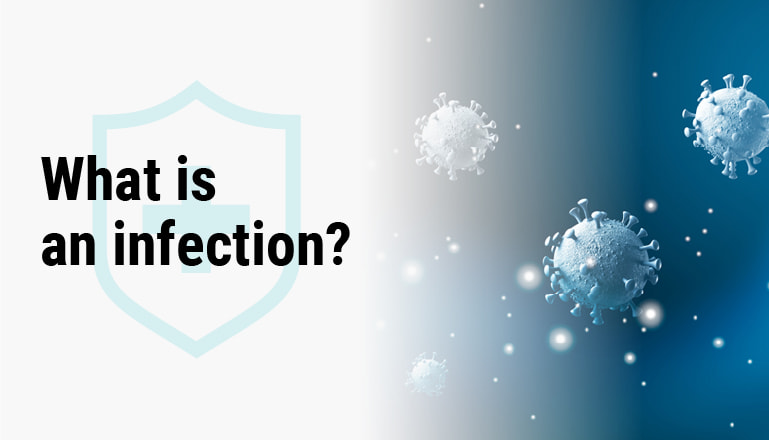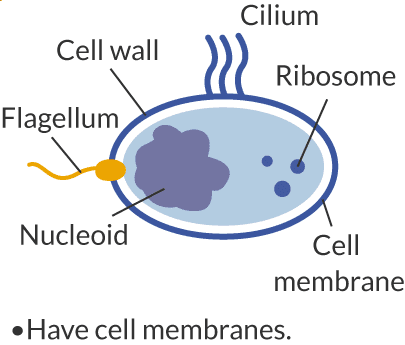Parasites
Roundworms,
lice, etc.
What is
immunity?
How to keep
the immune system?
L. lactis Plasma
Academic Reports and
External
Announcements

Infectious diseases are illnesses resulting from microorganisms called pathogens invading and proliferating in the body and causing symptoms.Pathogens include viruses, bacteria, fungi, and parasites, which differ in size and structure.
Most of them are so small that they are invisible to the naked eye and are always present around us in the air, water, soil,
and animals.

Roundworms,
lice, etc.

Mold, yeast,
etc.

E. coli,
cholera bacteria,
etc.

Influenza virus
Etc.
Source: Gakken Manga de Wakaru Series 176:
Secrets of Immunity
The main pathogens that cause infections are viruses and bacteria. The differences between the two pathogens are as follows.
| Size | Structure |
Way of proliferating |
Pathogens (and infections caused) |
Pharmaceuticals | |
|---|---|---|---|---|---|
| Virus | -So small that they cannot be seen by the naked eye. They are approximately 10 to 200 nanometers in size, one-tenth to one-hundredth the size of bacteria. -Not visible with an optical microscope, but visible with an electron microscope. |
 |
Since they have no cells, they enter human or animal cells and make copies of themselves to proliferate. | -Influenza virus (the flu) -Coronavirus (COVID-19) -Norovirus (infectious gastroenteritis [food poisoning]) -Measles virus (measles) -Rubella virus (rubella) -Herpes virus (herpes zoster) -HIV (AIDS), etc. |
Antibiotics do not work. |
|
Bac- teria |
-So small that they cannot be seen by the naked eye, ranging in size from about 0.5 to 3 micrometers. -Visible under an optical microscope. |
 |
Since they are cells, they make copies of themselves (through cell division) to proliferate. | -Streptococcus pneumoniae (pneumococcal infection) -E. coli (infectious gastroenteritis [food poisoning]) -Mycobacterium tuberculosis (tuberculosis) -Bacillus tetani (tetanus) -Plague bacteria (The Plague) -Cholera bacteria (cholera) -Bordetella pertussis (whooping cough) -Dysentery bacillus (dysentery), etc. |
Antibiotics are effective. |
Source: Gakken Manga de Wakaru Series 176:
Secrets of Immunity
The route by which pathogens enter the body is called the "route of infection," and the 4 main routes are described below.

Inhalation of airborne bacteria or viruses causes infection.

Inhalation of spray (droplets) from coughing or sneezing causes infection.

Infections are spread by touching an infected person, or touching something with bacteria or viruses on it.

Transmitted through contaminated water, food, blood, animals, or insects.
For all of history, infectious diseases have spread throughout the world and claimed many lives.
Let us unravel the history of the battle between humankind and infectious diseases.
Source: Gakken Manga de Wakaru Series 176: Secrets of Immunity
An infectious disease caused by the smallpox virus.Infection causes high fever, rashes all over the body, and in severe cases, death.
An infectious disease caused by the plague bacteria and transmitted to humans when infected fleas suck their blood. It is also called the Black Death because the skin turns black and the person dies.
It is caused by drinking water or eating food contaminated with cholera bacteria.
Symptoms include severe diarrhea and nausea.
An infectious disease caused by Mycobacterium tuberculosis.
When it develops, it causes cold-like symptoms such as cough, phlegm, and fever.
It is an infectious disease caused by the poliovirus. Children under 5 years of age are most often affected, and in severe cases, paralysis of the hands and feet may develop. In Japan, it is also called "pediatric paralysis".
An infectious disease caused by the measles virus, occurring most often in children. Symptoms include fever, runny nose, severe cough, bloodshot eyes, and red, itchy rash.
An infectious disease caused by the hepatitis virus.The disease causes gradual breakdown of liver cells and can lead to cirrhosis and liver cancer.
An infectious disease caused by a novel coronavirus.When the disease develops,
it causes fever, fatigue, and other cold-like symptoms, and in severe cases, it leads to pneumonia.
Source: Gakken Manga de Wakaru Series 176:
Secrets of Immunity